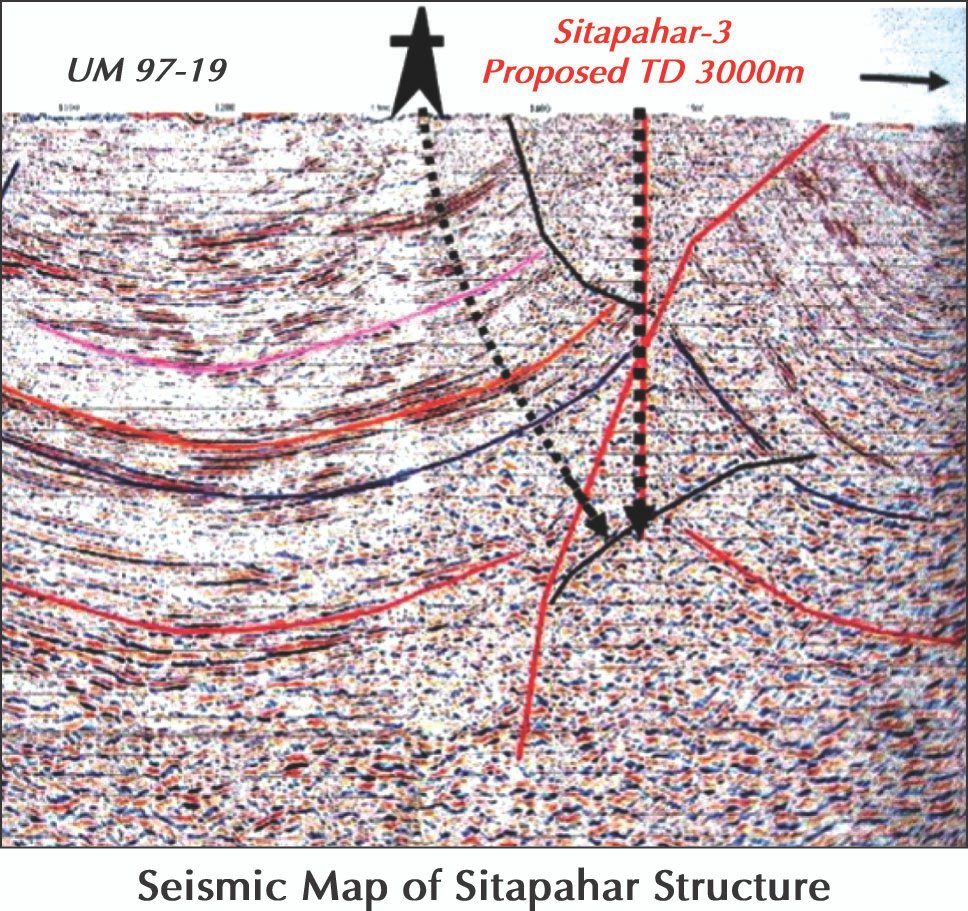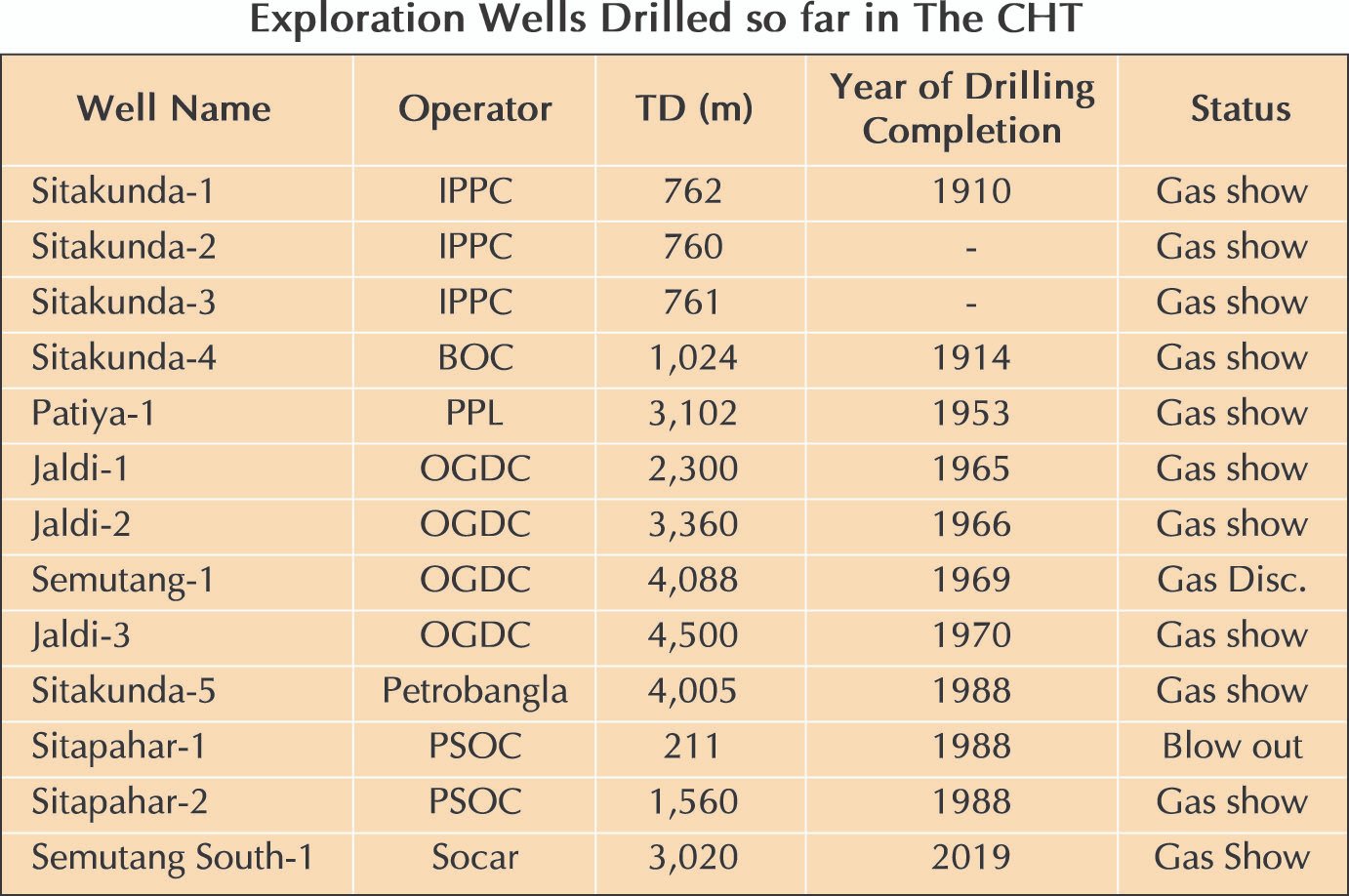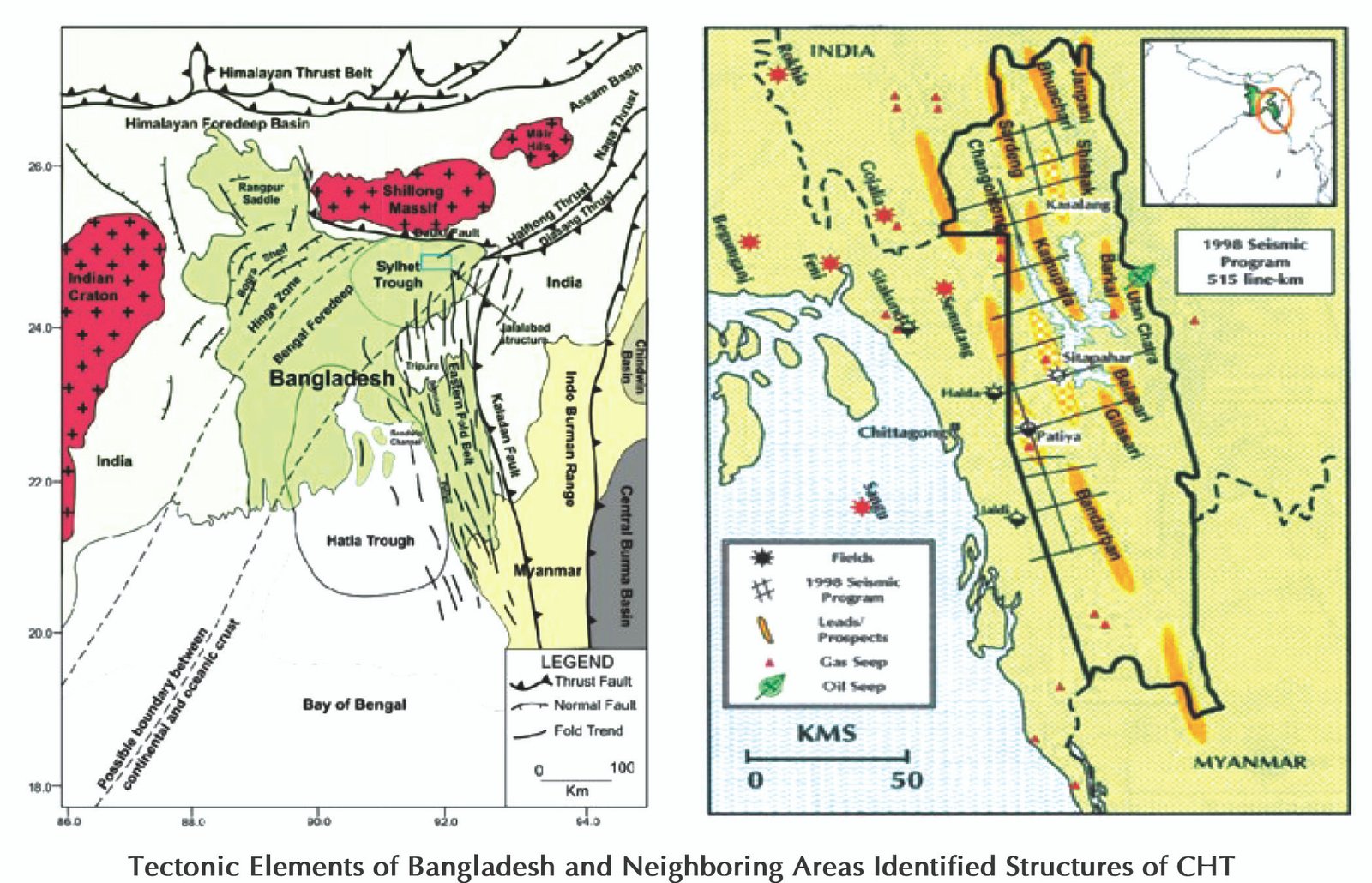
The world energy market has rapidly changed since the beginning of the Russia-Ukraine war from the end of February 2022. Consequently, the supply shortages of energy commodities deepened and their prices increased sharply. In the meantime, the global energy crisis has started which affected Bangladesh too. Already LNG, crude oil and coal prices substantially increased and disrupted supply chains causing an energy crisis. In recent days, there has been a disruption in power generation as a direct result of the war. The reasons behind the crisis are lack of adequateoil and gas exploration, negligence of extraction of our own primary energy sources, and dependency on the import of LNG, liquid fuel, and coal for power generation. Adequate oil and gas exploration onshore and offshore, and extraction of our own coal resources could have kept us in a better situation to deal with the present crisis.
In order to deal with the ongoing gas crisis, there is an urgent need to explore oil and gas in the Chittagong Hill Tracts (CHT). BAPEX is in the process of taking an exploration program in the hill tracts and finding a good JV partner for some of the identified structures.
Considering the yearly increase in demand for natural gas, the probability of gas being exhausted within a decade is high if we fail to discover some new gas fields with considerable reserves. Due to inadequate exploration activities and the addition of new gas reserves, the country has entered an era of major gas shortages and importing expensive LNG.
Chittagong Hill Tracts area is a part of the Eastern Fold Belt of Bengal Basin which is one of the largest and least explored areas in Bangladesh. The geological structures are very complex in this area. The successes from the same geological province across the border necessitate a re-evaluation of the prospect of hydrocarbon in this area, which requires a clear understanding of the petroleum system-based in-depth geological knowledge of the target area. Most of the gas fields are located in and near the fold belts of the Indo-Burman Ranges in the eastern part of Bangladesh.
Exploration History
Carrying out oil and gas exploration in the Chittagong region is not easy and it is very difficult. The structures are mostly elongated and narrow having highly folded, faulted, and fractured. Thesearchfor oil and gas in the Chittagong Hill Tracts as well as in Bangladesh started as far back as the beginning of the 20th centurythroughsomeisolatedgeologicalmapping. The exploration was not continuous but it has been carried out sporadically during the last 115 years. Thefirstattemptwasundertaken bythe Indian Petroleum Prospecting Company during 1908 to 1914and four exploration wells were drilled at the Sitakund structure. The deepestwell was only 1047 metersand experienced oil & gas shows during drilling in all wells. Apart from this, many surface oil and gas seeps were over and around this structure.
In 1953, Patiya-1 was drilled by Pakistan Petroleum Ltd. (Attock Oil Company of UK) and there was no hydrocarbon discovery, but an indication of hydrocarbon was encountered while experiencing the presence of an overpressured zone around 2400 meters. Several gas seepages were also observed. From 1964 to 1970, OGDCcarriedoutgeologicalandgeophysicalsurveysincludinggravity& magneticsurvey, and drilled three exploration wells at Jaldi where an overpressured zone was encountered at Jaldi-2. One well was drilled at Semutang in 1969 resulting in the discovery of a small gas field. Afterthe discoveryofSemutang,a further sixwellsweredrilled forenhancingproductionbyOGDC,Cairn,andSocar.
After the independence of Bangladesh, very few initiatives were taken for hydrocarbon exploration in the Chittagong Hill Tracts. In1981,ShellOilCompanywasawardedforthe ChittagongHillTractsforhydrocarbon exploration underPSC.ShellOil conductedgeologicalandseismicsurveysandtwo exploration wells were drilled at the Sitapaharstructure. In 1988, Sitapahar-1 was drilled up to 211 meters only and experienced a blowout. Sitapahar-2 was drilled up to the depth of 1506 meters by Shell Oil but couldn't complete drilling due to insurgency in the hilly areas. During drilling, observed gas shows at different depths. Several gas seeps were also observed in the crestal (or Crystal) part of the structure at Pagli Chara. In 1984, Petrobangla drilled Sitakund-5 up to the depth of 4005 meters having a lot of technical difficulties which took more than 4 years and even couldn't reach the target depth. Surface oil seepages were observed at Barkal, Sitakund, Uthan Chatra, Kasalong, and other structures as well as neighboring areas. Not yet drilled any well at Kasalong structure but experiencing several oil and gas seepages. It is understood that exploration in the Chittagong Hill Tracts by Shell Oil was a bit difficult due to insurgency during the 1980s.
In 1993, Petrobangla had taken an initiative and awarded Block - 22 to United Meridian International Corporation (UMIC) of USA under PSC for exploration and development of Chittagong and the Chittagong Hill Tracts. UMIC conducted geological and seismic surveys in the different structures but couldn't go for any drilling. Further, Ocean Bangladesh Corporation, an operator of Block-22, undertook an evaluation program to drill wells at Sitapahar and Kasalong structures butfinally couldn`t drill due to the abrupt fall in international oil prices and they left Bangladesh. In 2019, an exploration well was drilled by Socar of Azerbaijan at a discovered gas field at Semutang, but it was dry.
A total of 13 exploration wells and 6 development wells (at Semutang) have been drilled so far in the Chittagong Hill Tracts, but resulted in a small gas field discovery at Semutang in 1969 and experienced oil and gas shows in the different wells during drilling which is very good indication for migration of oil and gas.

Hydrocarbon Potentials in CHT
The CHT was created as a result of the collision between Indian and Eurasian plates and the Upper Tertiary sandy-argillaceous sediments, and folded into a series of long sub-meridional anticlines and synclines represented in the surface topography by elongated hill ranges and intervening valleys. The folded belt is characterized by the folding of the sedimentary layers into a series of anticlines (upwards fold) and synclines (downward fold). The intensity of the folding is greater towards the east causing a higher topographic elevation in the CHT than in the western part.
CHT is the only extensive hilly area in Bangladesh that lies in the southeastern part of the country, bordering Myanmar in the southeast and the Indian states of Tripura in the north. There were discoveries of 12 gas fields in Tripura where similar geological conditions are prevailing like Chittagong and Hill Tract areas. In the south of CHT, a number of large gas fields have already been discovered in the offshore Rakhine Basin of Myanmar but little exploration was carried out in our hill tracts. There is a good chance of oil and gas discovery if we carry out extensive exploration work in the identified structures.
The Folded Belt represents the most prominent tectonic element of Bengal Foredeep with general sub-meridional trending hills parallel to the Arakan Yoma Folded System. The Folded system extends within Bangladesh which covers a large area on the onshore having narrow and elongated trending folds in the eastern part i.e. Sylhet and Chittagong region, Tripura, the southern part of Assam, Mizoram, and Myanmar territory. Some of the structures in the eastern part are tightly folded, faulted, and thrusted with narrower synclines between them.
The anticlines are prospective for hydrocarbon accumulation around the world but CHT is a highly disturbed area due to faulting and shale diapirism. Most of the anticlines in the hill tracts and adjacent areas are affected by thrust faults. So, the crestal (or Crystal) part of those anticlines may not be the prospect for a hydrocarbon trap. The prospect may lie in the nose or plunge area of an anticline.
The traps in the CHT are structural i.e. folded anticlines. The traps are underground rock formations where a porous and permeable reservoir rock is surrounded by impermeable seal rock where oil and gas were trapped. In some of the folded anticlinal traps, a number of faults cause compartmentalization of the reservoirs. In the extreme eastern part of the fold belt and anticlinal structures are severely distressed by the major thrust faults.
Numerous oil and gas seepages found in the different areas and Chara`s of Sitakund and Kasalong structure. Apart from experienced oil and gas shows in different wells of Sitakunda, Sitapahar, there are indications of oil at Patiya-1. In addition, many gas samples were collected from surface seeps of Kuttal Chari, Rumba Chari, Basant Chari, Paindu Khal etc.

Gas Resources
Petroleum resources aretheestimated quantitiesof hydrocarbonsnaturallyoccurringonor withintheearth’scrust.Resourceassessmentsestimatetotalquantitiesinknownandyet-to-be-discoveredaccumulations. The estimationisfocusedonthosequantitiesthatcanpotentiallyberecovered. The Hydrocarbon Unit of the Energy and Mineral Resources Division and Norwegian Petroleum Directorate jointly carried out a resource assessment study in 2001 when estimated gas resources (P Mean) of 17 prospects of CHT was 18.4 Tcf. In 2010, Gustavson Associates of USA, carried out an updated estimation where estimated gas resources (P Mean) of 11 prospects of CHT was 42.6 Tcf.In 2012, Sinopec Shengly of China estimated gas resources of four potential structures viz. Patiya, Jaldi, Sitapahar and Kasalong at 5.16 Tcf. From these three estimations and considering surface oil and gas seepages, we may predict that there is a very good chance of finding oil and gas in the hill tracts. Already identified 17 potential structures are Bhuachari, Janpani, Sardeng, Chanhotan, Shishak, Kasalong, Kamupura, Sitakunda, Barkal, Sitapahar, Utan Chatra, Belasari, Gilasari, Patiya, Jaldi, Bandarban, Matamuhuri etc.Gustavson also carried out resource estimation of seven prospects in the Cox`s Bazar areas which are Ukhia, Ohlatong, Inani, Dakhin Nila, Teknaf, Coral Dip and St. martin’s Island and the estimated gas resources (P Mean) was 11.6 Tcf.
Gas Potentials of Tripura
The Indian stateofTripura coversanareaofaround10,500sq.kmwithinthewesternflankofAssam-Arakan Basin.TheTripura sub-basinischaracterizedbyhugefolding,faultingandthrusting like CHT.The areafallsinaverycomplexgeologicalsetup.Inordertounderstandandascertainthehydrocarbonpotentials ofTripuraFoldBelt,ONGCdrilledan exploration wellin1975overBaramuraStructure,wherepresenceofcommercialgaswas proved.Explorationactivitiesintheareashaveledtoidentificationof24exposedandconcealedstructures.Outofidentified24structures,18structureswere drilled. Overtheyears,a total of 12 commercialgasfieldshave beendiscoveredwhich areBaramura(1975),Gojalia(1982),Rokhia(1983),Konaban(1986),AgartalaDome(1987),Tichna(2006),Sonamura (2006),Sundalbari(2007),Kunjaban(2007),Tulamura(2008),Khubal(2009) and Kathalchari (2014) and taking production from seven gasfields. Present recoverable gas reserves of Tripura is about 1.2 Tcf which may increase to 2.4 Tcf considering updated reserve estimation of Kathalchari Gas Field. Present, daily average gas production is about 180 MMCFfrom seven gas fields and from 76wells. In 2017, ONGChastaken a plantoaugmentgasproductionandsetatargetofproduction of about350 MMCFperday. They had a plan to drill 153 wellswithin 2022 in Tripura out of which 81 exploratory wells and 72 development wells. But, the completion of this project is being delayed mostly due to Covid-19 and Russia-Ukraine war.

JV Initiatives by BAPEX
To expedite oil and gas exploration and to minimize gas crisis of Chittagong, BAPEX invited EOI during December 2010 for doing JV between BAPEX and foreign national companies for four structures of CHT which were Patiya, Jaldi, Sitapahar and Kasalong structures. Sinopec-Shengli-Longwoods Consortium of China was the only responsive and a comprehensive proposal was submitted to BAPEX where Sinopec was assigned as operator. The consortium proposed drilling two exploration wells in Patiya and Jaldi structures and a plan to drill within a year. Necessary 3D seismic survey to be carried out if any discovery of oil and gas is found at Patiya or Jaldi structure. The consortium agreed to keep BAPEX as an active partner. Prepared a draft of the JV and it was initialed during March 2012, but unfortunately failed to get clearance on it from the higher authorities concerned. BAPEX invited EOI again in April, 2015 against the mentioned four structures. Geojade-Longwoods Consortium of China was the only responsive bidder and a proposal was submitted to BAPEX, initialed a draft of JV between Geojade and BAPEX, and got all the clearance from different ministries and authorities, but unfortunately Geojade declined.
Recently, BAPEX took further initiative and invited EOI for 10 structures of CHT but avoiding attractive and prospective structures like Patiya, Jaldi, Sitapahar and Kasalong. BAPEX kept it for exploration drilling by them in the near future. BAPEX already received poor response from IOCs against EOI. It was due to the negative impact of COVID-19, Russia-Ukraine war and avoiding prospective four structures.
Challenges of Drilling
There are huge technical and financial risks for carrying out exploration activities in the CHT due to difficult terrains, complex geological structures having overpressured zones and high risk prospects. Drilling in the overpressured zone is very problematic especially handling with very high specific gravity drilling fluid. The chances of pipe stuck, fishing operation and side tracking are very common phenomena during drilling. Apart from following PPR,it would be more difficult for BAPEX to procure special materials and services directly from the vendors within the shortest possible time which may be required for special operation. If it takes a long time that may jeopardize the purpose of drilling. There will be every chance of blow out during drilling due to the presence of overpressured zones. Under these circumstances, controlling the well is also very difficult. The necessity of a highly experienced drilling engineer, well control expert, exploration geologist and mud engineer are very much required to minimize drilling hazards and to control the well during drilling in the overpressured zone. The higher capacity drilling rig, mud pump and wellhead are also required which will increase remarkably the cost of drilling. As a part of exploration, there is a constraint to carry out 2D and 3D seismic survey in the crestal (or Crystal) part of the structure due to surface exposures of rocks.
Drilling in naturally fractured or faulted formationsis very much risky. A natural fracture system in the rock can often be found near faults. Rock near faults can be broken into large or small pieces at the time of drilling. If they are loose they can fall into the wellbore and drill string may be stuck in the hole. Wellbore instability is caused when highly stressed formations are drilled and when a hole is drilled in an area of high tectonic stresses. The rock around the wellbore may collapse into the wellbore. Naturally overpressured shales are usually under-compaction, naturally removed overburden and uplift.
Observations
Bangladesh has been facing an acute gas crisis since 2010 due to very slow hydrocarbon exploration although gas demand has increased sharply. There are good potentials of hydrocarbons in the offshore but unfortunately not yet taken any appropriate exploration program specially drilling since a long time by the IOCs under PSC. The government should give priority and continue its effort to explore hydrocarbons in the offshore areas. CHT is the only area where there is a possibility of commercial oil and gas discovery within a reasonable time. It is definitely a less explored area and few exploration drilling had been done in some of the structures. I do believe, if the prospects of CHT are properly explored, there is a good possibility of finding oil and gas.
There were campaigns against foreign investment for oil and gas exploration as well as for mining of coal resources. I think, the foreign investment would have been beneficial for us. If the oil or gas fields are commercially discovered by the IOCs, we need to pay them. But if there is no commercial discovery, we are not obliged to pay. But, it has been preferred by the government to increase import of primary energy to meet the shortfall instead of expediting hydrocarbon exploration.
However, the present government has already taken some remarkable initiatives to minimize the gas and power crisis, which are import of electricity from India, import of LNG, construction of nuclear power project at Rooppur, construction of a number of coal-based power plants at Matarbari, Payra, Rampal, Banshkhali etc. The government is also trying to import hydro electricity from Nepal and Bhutan. But these are all import-oriented. We need to give emphasis to explore our own natural gas/oil as well as extraction of coal without further delay.
Recently, the government has given clearance to Chevron Bangladesh to add a 60 sq km area for exploration and development outside their existing contract area in the north of the Bibiyana Gas Field which is very much necessary and appreciated. Similarly, Chevron may come forward with a proposal for Jalalabad extension.
We should keep it in our mind that BAPEX didn`t drill any well in the CHT.
Way Forward
Our energy security is now mostly dependent on imported LNG, LPG, liquid fuel, coal and electricity. Considering economic point of view, it is necessary to carry out exploration in the hill tracts by BAPEX along with reputed IOCs as soon as possible. There is a good chance for commercial discovery of oil and gas in the different structures of CHT if properly explored. Exploring CHT could play an important role to minimize the long term gas demand of Chittagong areas. So, it is imminent that the oil and gas exploration activities need to be expedited further without any delay.
Apart from this, oil and gas exploration in the country needs to be accelerated through BAPEX, JV between BAPEX and the reputed IOCs as well as under PSC. Initiative may be taken for direct invitation and negotiation for carrying out exploration under PSC in the
onshore, deep drilling and offshore areas with reputed IOCs such as Chevron, Shell Oil, Total Oil, Stat Oil, UMIC, Sinopec, CNPC, CNOOC, PTTEP, Petronas, Rosneft, Gazprom, Zarubezhneft etc.
Mortuza Ahmad Faruque, Energy Specialist & Former Managing Director of BAPEX




